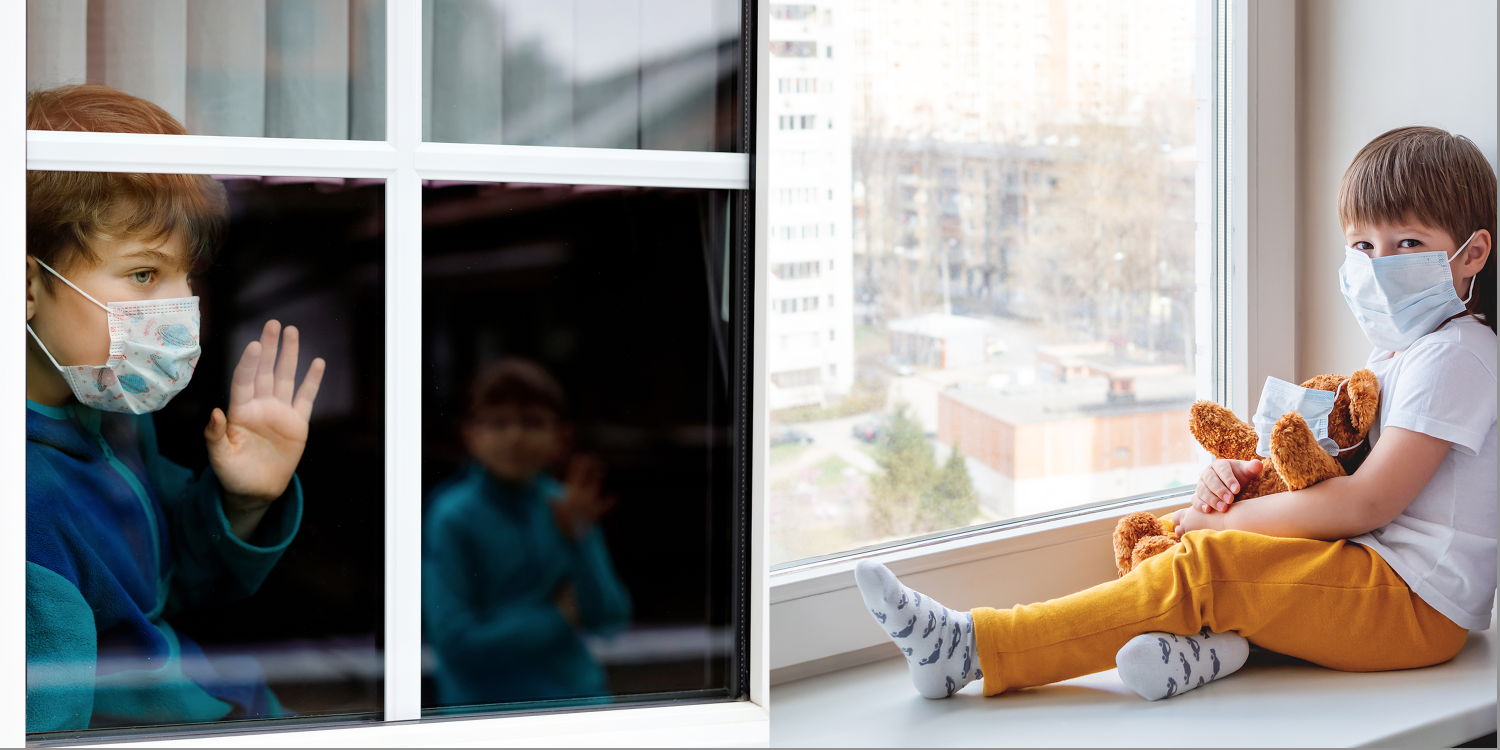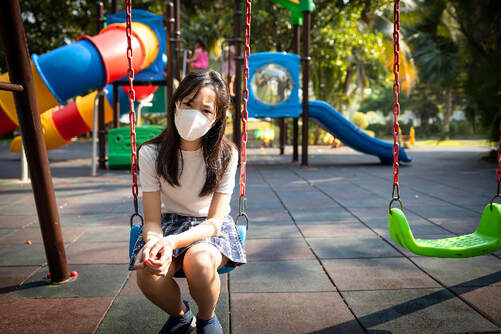|
Home from school and separated from peers during crucial developmental phases, young children and adolescents were clearly those most negatively impacted, in various ways, by the pandemic lockdowns. In 2020, school administrations were told to close schools in the name of safety to children, their families, and teachers. We are now learning that the closures caused an astounding decline in children’s academic performance and mental health. By February of 2022, schools globally had been closed because of COVID-19 for an average of 4.5 months, affecting an estimated 1.6 billion students and creating what the United Nations has called the largest disruption to education in history. Even two years into the pandemic, 48 countries had not yet fully reopened their schools, according to the UN cultural organization UNESCO. In schools that have reopened in the United States, there are ongoing staff shortages, recurrent absences for sickness and COVID 19 exposure and the required ‘quarantine’ directed by the Centers for Disease Control and Prevention (CDC) guidelines. High-poverty schools had the lowest levels of in-person instruction, causing low-income students to fall even further behind their more affluent peers. Some of the world’s most vulnerable areas in particular have been gravely impacted; Uganda only recently opened its school doors, but some of their schools were not able to reopen for they were financially destroyed by the long closures. School closures resulted in girls spending more time at home in their villages making them more vulnerable to getting pregnant and increased risk of sexual violence and exploitation. Even in ‘normal years’ only 53% of girls aged 6-12 are reported to complete the required seven years of primary education, and merely 22.5% of the female Ugandan population as a whole enroll in secondary education. The lockdowns caused a dramatic and fundamental destruction of education especially in countries like Uganda and especially for girls. For these girls, their dream of becoming a teacher or doctor, a lawyer, or other professional is lost forever more. A psychiatric pandemic in our youth. A matter of paramount importance is the impact of the global events on our children’s wellbeing, and what appears now to be a landslide of psychiatric and psychological symptoms well documented in numerous studies and publications. In 2021, the American Academy of Pediatrics declared children’s mental health to be a national emergency. According to the federal Centers for Disease Control and Prevention, emergency department visits for suspected suicide attempts among adolescents jumped 31% in 2020, compared with 2019. In February and March of 2021, emergency department visits for suspected suicide attempts were 51% higher among girls aged 12–17 than during the same period in 2019. A 2021 Lancet paper gives us a concerning picture of the result, based on data from 204 countries. The key finding was a spectacular increase of more than 25% in both anxiety and depression disorders. Those just entering adulthood (ages 15-25) and women were the hardest hit. New or old problem? Before 2020, anxiety and depression in the young were already on the rise, with a 2018 study finding a 15% increase in unhappiness measures since 2015 for 15-year-olds in the UK, a 10% increase in the US, and a 5% increase in the rich OECD countries as a whole. Substance abuse among teenagers, gaming addiction and other worrying signs were also flashing red in the decade leading up to 2020. Then in 2020 came lockdowns, social distancing, school closures, forced masking, forced vaccination and 24-7 news cycles of fear Studies have shown greater COVID-19 media consumption is associated with greater psychological distress and that approximately two thirds of this effect operate indirectly through increased perceptions of COVID-19 threats. During the pandemic, anxiety and depression rose at an alarming rate. One report conducted by the National Council for the Child in Israel, stated that in the period “from 2019 to 2021, there was a 39 percent rise seen in children ages 12-17 diagnosed with depression, a 33% rise in those diagnosed with anxiety and a 20% rise in those diagnosed with stress and emotional disorders.” Significant increases in cases of youth violence, rage, and suicides were also noted, particularly following repeat quarantine periods that were imposed in that country since the beginning of 2020. In presenting its findings, the Council called for coordinated effort through education and health outreach programs to address these concerning figures and improve outcomes. These researchers warn of an impending psychiatric pandemic in our youth. We think of kids being resilient and having natural developmental tendency toward positive mental health, but at this stage no one really knows what the long-term fallout will be. Similarly, an article in The Harvard Gazette pointed to “troubling trends” regarding children and adolescents who struggled with aspects of the pandemic that limited their activities on multiple levels. While there are disparate views as to what variables could affect the findings, some clinicians noted that “the pandemic had a more severe impact on children and young people already struggling with pre-existing issues from emotional problems to socioeconomic deprivation”.” But no doubt, across the board we have seen mental health problems skyrocketing. Before the pandemic, the rate of children's depression and anxiety were estimated to be 8.5% and 11.6%, the researchers write. Now, however, the study shows that one in four children are reporting depression and one in five are reporting anxiety, as noted in this literature review published in JAMA Pediatrics today.
so, while some thrived during the extended time at home, far more suffered from the lack of academic, social, and emotional support and struggled with learning through a screen versus in-person teaching. Children who are most vulnerable to school closures include children who rely on school‐based health and mental health care, children from households that are food insecure, children who had little guidance with home learning, children who are at risk of abuse and neglect at home, and children who are homeless and from impoverished areas. Covid-related school closures affected children very unequally. Many children, across most countries, lacked equal and inclusive access to online or remote education, as well as the time and space to learn . And, even after schools reopened, one survey found that the rate of chronically absent students nationwide is now 22%, which is 2.7 times what it was before school closures. Upon return to in-person instruction in 2021, the dictum from the CDC advised that all students, visitors, and staff should wear masks in schools, regardless of their vaccination status and maintain “layered mitigation strategies,” like handwashing, regular testing, contact tracing to identify threats of exposure to the virus, and cancelling certain extracurricular activities in high-risk areas. Note: There are known health hazards of frequent us of hand sanitizers that we encourage to read about here: https://www.sciencedirect.com/science/article/pii/S0048969720340833 Individuals with autism, hearing impairment, PANS or PANDAS, or other disorders that employ different communication techniques also are at increased risk of detriments that could influence cognitive health and development.
 IQ scores have been steadily falling for the past few decades, and environmental factors are to blame according to this study, published in 2018. Some suggest these environmental factors include more exposures to toxic food, water and air, less healthy diets, more sedentary behavior, a rise in mental health issues such as depression, anxiety, ADHD, online gaming and 24-7 access to various forms of technology creating an ONLINE brain as discussed in this article where the constant stream of online information affects cognition. One example they share is a study that found that six weeks of engaging in an online role playing game caused significant reductions in grey matter within the orbitofrontal cortex – a brain region implicated in impulse control and decision making. The COVID Generation and Lingering Effects: A Troubling Picture Studies have shown that through the COVID years, test scores have dramatically declined, with one report finding that in districts offering distance learning, the decline in passing rates for math was 10.1 percentage points greater than in districts that offered in-person instruction. In Maryland, 85% of students now are not proficient in math, and in Baltimore the figure is 93%. Michigan, Washington, and other states have found dramatic declines in their test scores. In Los Angeles, the decline has been worse for younger students, with 60% of third and fourth graders not meeting English standards compared to 40% of 11th graders. Overall, the youngest children were most profoundly impacted by lockdowns and school disruptions, and some of them now lack basic life skills.  Frontiers in Psychology published a recent literature review that concludes: “In sum, there is clear evidence for a negative effect of COVID-19-related school closures on student achievement…the effects achieved by remote learning were similar to those achieved when no teaching was implemented at all during summer vacation. Alarmingly, specifically younger children (Tomasik et al., 2020) and children from families with a low SES (Maldonado and De Witte, 2020; Engzell et al., 2021) were negatively affected by COVID-19-related school closures.” Kid’s Pandemic Brain. School closures contributed to an increase in anxiety, loneliness, and stress; negative feelings due to COVID-19 were proportional to the length of the school closure. And we have already discussed how many children did not ‘thrive’ during on-line learning. A group of researchers from Rhode Island looked at the IQ scores of around 605 children born before and during the COVID-19 pandemic. According to their study posted in medRxiv on Aug. 11, babies born pre-pandemic had IQs ranging from 98.5 to 107.3. However, those born during the COVID-19 pandemic had IQ scores lower by 27 to 37 points. In this report, “The COVID generation: how is the pandemic affecting kids’ brains?”, a group of doctors compared communication and motor skills of babies up to 6 months old and looked at results of babies born before and after the pandemic. The infants born during the pandemic scored lower, on average, on tests of gross motor, fine motor and communication skills compared with those born before it (both groups were assessed by their parents using an established questionnaire). It didn’t matter whether their birth parent had been infected with the virus or not; there seemed to be something about the environment of the pandemic itself. The researchers found that the longer the pandemic has continued, the more deficits children have accumulated. Realizing what they discovered, they commented “the magnitude is massive — it’s just astonishing.” What could have caused this? Here are some proposed theories:
The Surgeon General’s Advisory on Protecting Youth Mental Health outlines a series of recommendations to improve youth mental health across eleven sectors, including young people and their families, educators and schools, and media and technology companies. You can read or download the full report here, and please don’t hesitate to consult your pediatrician for help if your child is experiencing emotional or learning difficulties. In closing…
Children “are a product of their environment.” Their brains are very neuroplastic and their brains can recover and their hearts can heal Make sure they have opportunities for play and social interaction with other kids. Read to them, play with them. Talk about magical and emotional stories. Listen to what they have to say. Express joy and take away the fear. Feed them healthy non-GMO foods. Get out in the sunshine. Take a walk holding hands in nature. Take off the masks and let them see facial expressions; we’d previously written about face coverings that literally mask expression, all of which can impact ways our brain processes information. Limit access to digital technology. Put away YOUR phone when you are interacting with them. Turn off the negative news. Zooms and remote learning just don’t do it, keep them in school or commit to a homeschool program. Seek educational help or counseling if warranted. And most of all….shower them with never ending love! It ‘takes a village’ “Ubuntu” Suzanne K. Gazda, MD More to consider: In the past, we have addressed the topics of stress and trauma and influences on brain health incurred by youth and adults alike in previous blogs, all of which can be found in our blog library archives or by using the “Search” function on every page. Just a few of our relevant articles to review include: https://www.suzannegazdamd.com/blog/your-brain-on-stress-and-how-to-conquer-the-effects https://www.suzannegazdamd.com/blog/stress-glucocorticoids-and-the-effects-on-our-brain https://www.suzannegazdamd.com/blog/our-present-and-future-health-depends-on-healing-from-emotional-trauma And our long COVID series offers an ongoing and updated perspective about the many complex aspects of this novel disorder, so please check out more related topics there. References: Ajanovic S, Garrido-Aguirre J, Baro B, Balanza N, Varo R, Millat-Martínez P, Arias S, Fonollosa J, Perera-Lluna A, Jordan I, Muñoz-Almagro C, Bonet-Carne E, Crosas-Soler A, Via E, Nafria B, García-García JJ and Bassat Q (2021) How Did the COVID-19 Lockdown Affect Children and Adolescent's Well-Being: Spanish Parents, Children, and Adolescents Respond. Front. Public Health 9:746052. doi: 10.3389/fpubh.2021.746052; https://www.frontiersin.org/articles/10.3389/fpubh.2021.746052/full Bratsberg, B., Ogeberg, O. Flynn effect and its reversal are both environmentally caused. PNAS. May 14, 2018. https://www.pnas.org/doi/10.1073/pnas.1718793115 Hammerstein S, König C, Dreisörner T and Frey A (2021) Effects of COVID-19-Related School Closures on Student Achievement-A Systematic Review. Front. Psychol. 12:746289. doi: 10.3389/fpsyg.2021.746289 Ludovica Brusaferri, L., Alshelh, Z., Martins, D., et al. The pandemic brain: Neuroinflammation in non-infected individuals during the COVID-19 pandemic. Brain, Behavior, and Immunity. Volume 102, 2022, Pages 89-97, ISSN 0889-1591. https://doi.org/10.1016/j.bbi.2022.02.018. https://www.sciencedirect.com/science/article/pii/S0889159122000472 Macmillan, C. Will the pandemic scar our children? Yale Medicine. July 8, 2021. https://www.yalemedicine.org/news/how-pandemic-affects-children Morrison, M. Are pandemic-related stressors impacting uninfected people’s brain health? Press release, Massachusetts General Hospital. February 22, 2022. https://www.massgeneral.org/news/press-release/pandemic-related-stressors-impacting-uninfected-brains Nobrega M, Opice R, Lauletta MM, Nobrega CA. How face masks can affect school performance. Int J Pediatr Otorhinolaryngol. 2020;138:110328. doi:10.1016/j.ijporl.2020.110328 https://www.ncbi.nlm.nih.gov/pmc/articles/PMC7462459/ Pearson, H. COVID derailed learning for 1.6 billion students. Here’s how schools can help them catch up. Nature. 25 May 2022. https://www.nature.com/articles/d41586-022-01387-7 Racine N, McArthur BA, Cooke JE, Eirich R, Zhu J, Madigan S. Global Prevalence of Depressive and Anxiety Symptoms in Children and Adolescents During COVID-19: A Meta-analysis. JAMA Pediatr. 2021;175(11):1142–1150. doi:10.1001/jamapediatrics.2021.2482 Simon, C. Snapshot of pandemic’s mental health impact on children. The Harvard Gazette. April 21, 2022. https://news.harvard.edu/gazette/story/2022/04/early-snapshot-of-pandemics-impact-on-childrens-mental-health/ Sparks, S. CDC Calls for Return to Universal Masking in Schools. Education Week. July 27, 2021 https://www.edweek.org/leadership/cdc-calls-for-return-to-universal-masking-in-schools/2021/07 Spiro, A. Depression, anxiety in children jumped during pandemic, study shows. Times of Israel. 26 January 2022. https://www.timesofisrael.com/depression-anxiety-in-children-jumped-during-pandemic-study-shows/ Stainback K, Hearne BN, Trieu MM. COVID-19 and the 24/7 News Cycle: Does COVID-19 News Exposure Affect Mental Health? Socius. January 2020. doi:10.1177/2378023120969339 https://journals.sagepub.com/doi/full/10.1177/2378023120969339 Zhou F, Montag C, Sariyska R, et al. Orbitofrontal gray matter deficits as marker of Internet gaming disorder: converging evidence from a cross-sectional and prospective longitudinal design. Addict Biol. 2019;24(1):100-109. doi:10.1111/adb.12570; https://pubmed.ncbi.nlm.nih.gov/29057579/ Additional reading: Masks in school https://www.theatlantic.com/ideas/archive/2022/01/kids-masks-schools-weak-science/621133/ COVID and collective trauma https://news.llu.edu/health-wellness/understanding-long-term-collective-trauma-from-covid-19 Mental health assessment of Israeli adolescents before and during the COVID-19 pandemic https://www.medrxiv.org/content/10.1101/2022.01.06.22268809v1 Impact of COVID 19 Pandemic on Early Child Cognitive Development https://www.medrxiv.org/content/10.1101/2021.08.10.21261846v1.full.pdf The COVID cult did lasting damage to our kids. https://www.tabletmag.com/sections/news/articles/the-covid-cult-did-lasting-damage-to-our-kids What COVID containment has done to our children. https://brownstone.org/articles/what-covid-containment-has-done-to-our-children/ COVID school shutdown biggest impacts. https://www.npr.org/2022/03/15/1086054482/covid-school-shutdown-biggest-impacts
1 Comment
Vanessa Benke
8/6/2022 10:37:44 pm
Such a sad time! Thank you for pulling all the research together to help battle this fight for our kids! Love the tips in the closing!
Reply
Your comment will be posted after it is approved.
Leave a Reply. |
AuthorSuzanne Gazda M.D. Neurologist Archives
January 2024
Categories |










 RSS Feed
RSS Feed